Well, here we are. And yes, that’s Apple’s Craig Federighi peering lovingly at Apple’s big move to its own silicon — the M1 chip, the first system-on-a-chip for Macs and the world’s first five-nanometre chip for a laptop or desktop.
Apple debuted its new M1 ARM chips in a new MacBook Pro, MacBook Air, and Mac Mini today. We dug into the specifications to find what else is changing that Apple didn’t talk about, and there’s a lot you’ll want to know if, or when, you plunk down for a new computer. But first, let’s talk M1.
That’s a fast chip (says Apple)
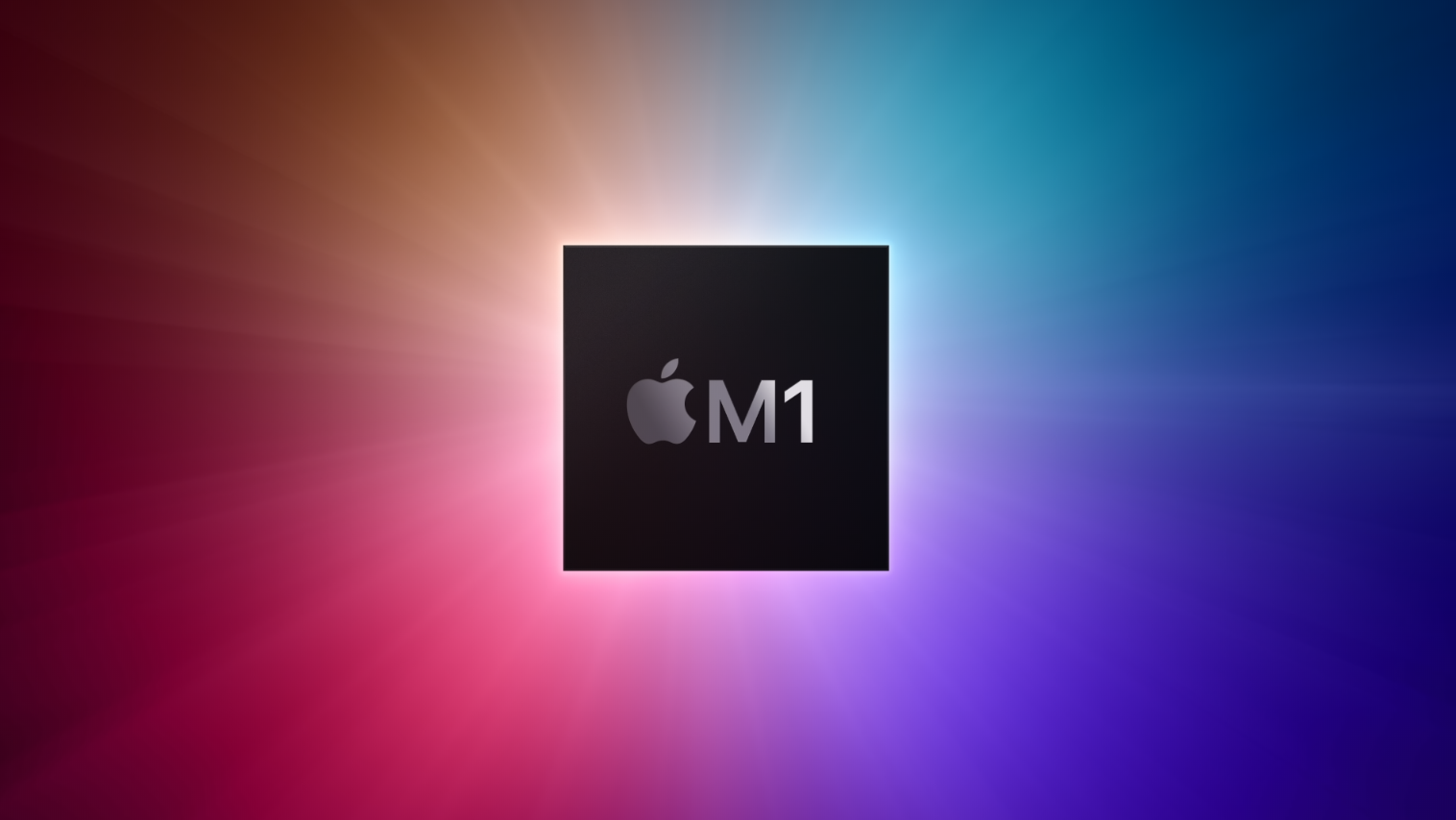
According to Apple’s marketing, its M1 chips feature the fastest and most-efficient CPU cores you can get your hands on. Splitting an eight-core chip into a four-core high-performance and high-efficiency design — which should sound familiar if you’ve ever watched an iPhone or iPad product announcement — lets Apple tap into some big performance and power-savings.
Apple proclaims its new M1 chip can reach twice the CPU and GPU performance as leading Windows laptop chips (unnamed, of course) at a mere 10W of power, and it can hit its performance peak on its CPU using one-fourth the power. For its GPU, it can peak at one-third the power of said mysterious Windows laptop.
Again, this is just Apple talk, but even if they’re goosing the benchmarks a little, it’s a reasonable conclusion to say that its M1 chip is going to offer faster performance than any Intel chips you can buy within its various product families. And the dual-focus on efficiency means you’re going to get a lot more battery life, too.
Should you buy an Apple M1 Mac or wait for a second-gen?
Summary:
- No price drop for MacBooks
- Don’t buy Intel MacBooks
- No 16-inch M1-based MacBook Pro (until later)
Today felt like Apple slapped M1 chips into preexisting Mac designs and didn’t do much upgrading beyond that. There weren’t any gigantic reinventions of the MacBook Air, MacBook Pro, or Mac Mini. You still won’t find Face ID on its MacBooks, for example, nor a 1080p webcam. There’s no grand reinvention of what you can basically already get in its Intel-based laptops, save for the switch to M1. It’s a guts-swap, plain and simple. Powerful and efficient guts, but guts nevertheless.
Also, I’m a bit surprised that Apple is only passing a slight savings onto those buying an M1-based Mac Mini, which gets a $US100 ($138) price drop for the base version. Otherwise, Apple is pushing its M1-based MacBook Air and MacBook Pro for the same price as its former Intel-based MacBooks. Given how much more money Apple undoubtedly saves by making its own silicon, it’s certainly enjoying its margins instead of passing the savings along to eager buyers.
Who would ever buy an Intel-based MacBook now? Unless you’re terrified that running Windows 10 on an M1-based MacBook is going to be a huge issue, there’s really no reason to ever go with such a remarkably slower, less-efficient system. While you can no longer buy an Intel-based MacBook Air from Apple, you can still order Intel-based MacBook Pros, but they’re all more expensive than Apple’s offerings (of course).
One other note: Apple only announced M1-based 13-inch MacBooks today. If you’ve been holding out for a 16-inch MacBook Pro based on the M1 chip, you’ll have to wait for an off-cycle product announcement — likely a press release dropping on a random day over the next few months — to get your hands on one.
Today’s announcement felt more like “Apple wants to get these out before the holidays” than “a true merging of Apple silicon with innovative design refreshes,” but that’s the biz, folks.
MacBook Air with M1
What’s different besides M1:
-
No fan
-
A display with a better colour gamut
-
Wifi 6
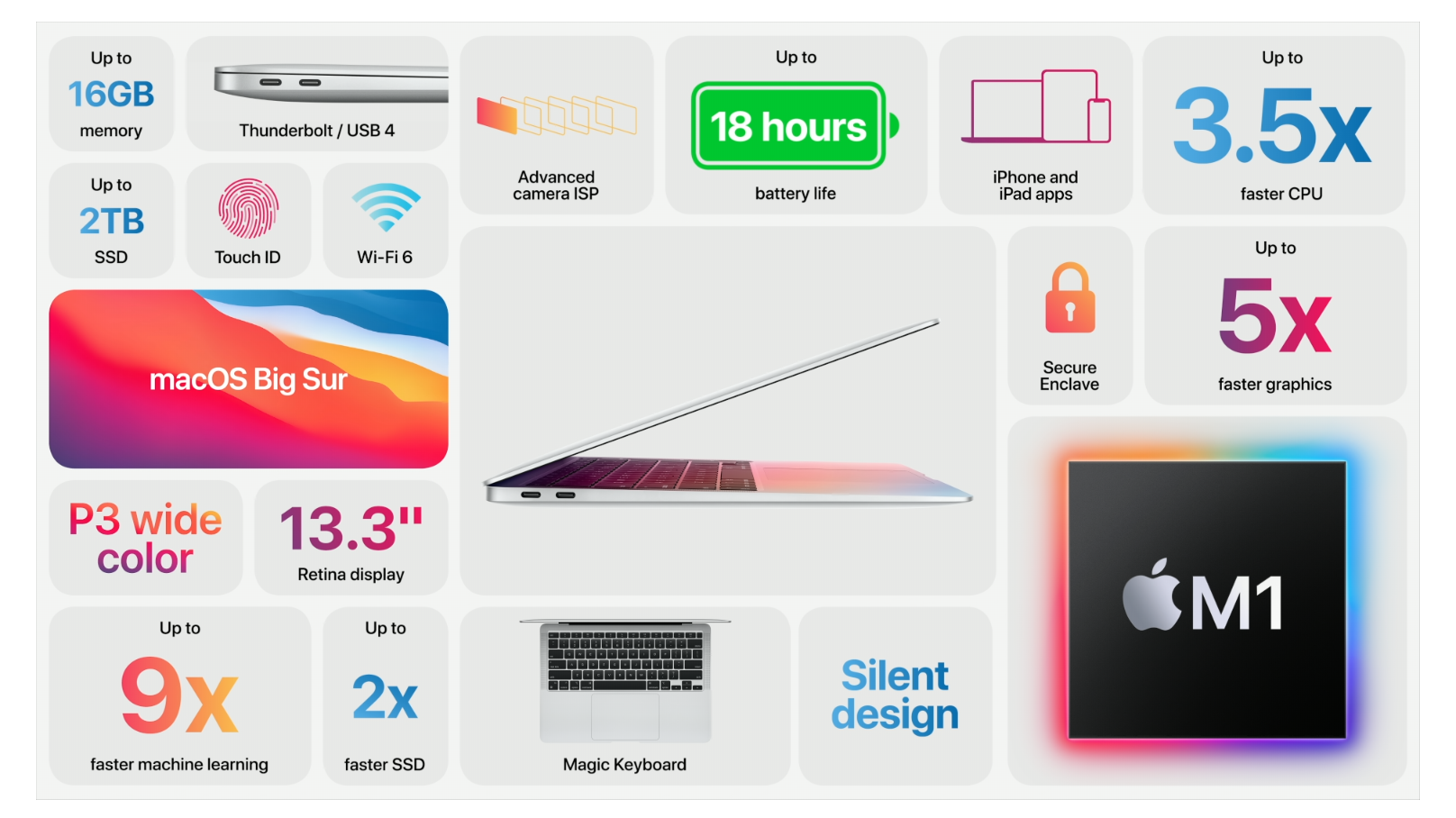
The graphic has all the major highlights you need to know, but it doesn’t go deep into comparisons. Looking at the previous Intel-based MacBook Air, you’re now getting an eight-core M1 chip instead of a four-core Intel Core i7 CPU, which promises “up to” six more hours of battery life in addition to performance improvements (3.5x CPU and 5x faster graphics).
I do want to call out the fact that this MacBook Air ships without a fan, which is incredibly intriguing for those of us who don’t like our laptops to sound like a jet engine when we load 30 browser tabs. The SSD, though faster, comes in the same storage capacities as before: 256GB, 512GB, 1TB, and 2TB. The 13.3-inch display is nearly identical, save for new support for the larger colour gamut of “wide colour,” or p3, instead of “Full standard colour,” or sRGB.
Otherwise, the M1-based MacBook Air has the same form factor, weight, webcam (balanced with some software improvements, claims Apple), and speaker setup as the last-gen MacBook Air. You get faster wireless performance via Wifi 6, an upgrade from Wifi 5, but that also depends on the supported speeds of the router you’re using with your MacBook Air. You’re also getting ThunderBolt 3/USB 4, which allows you to theoretically connect some batshit-expensive 6K external display to your…ultraportable laptop.
The M1-based MacBook Air comes in two varieties that you can customise with more memory and storage as needed. Preorders start today and begin shipping out next week.
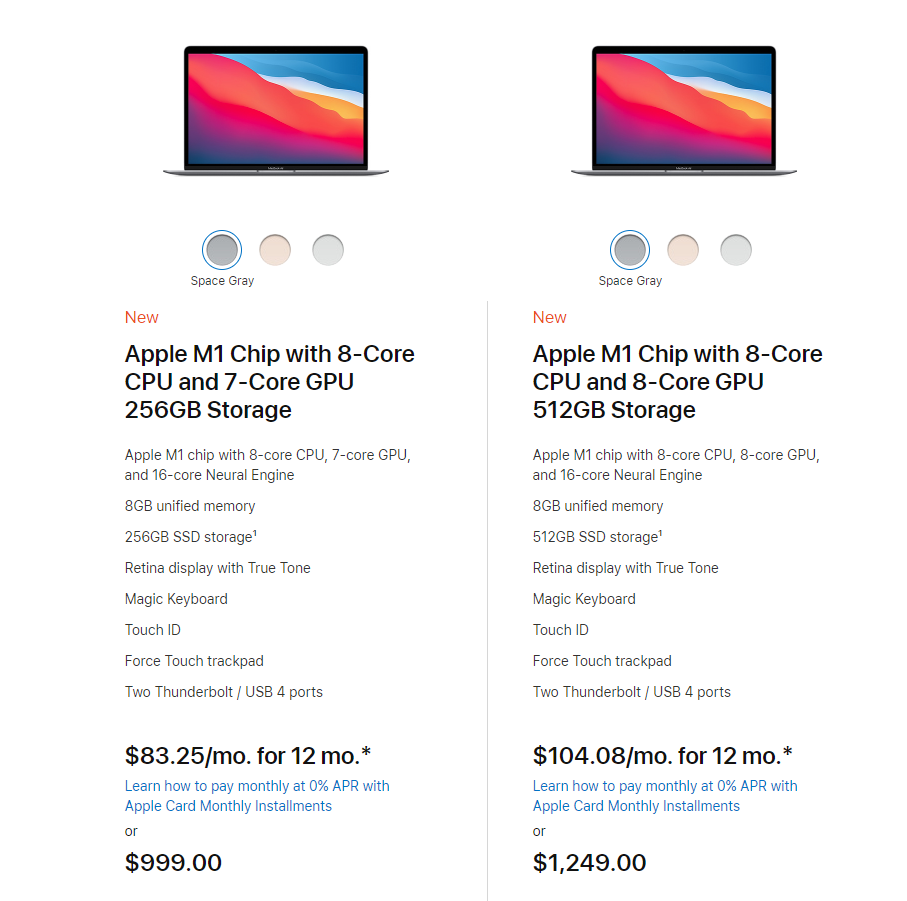
Mac Mini with M1
What’s different besides M1:
- Price drop
- Less maximum memory
- Can’t run three 4K displays at once
- Two Thunderbolt/USB ports instead of four
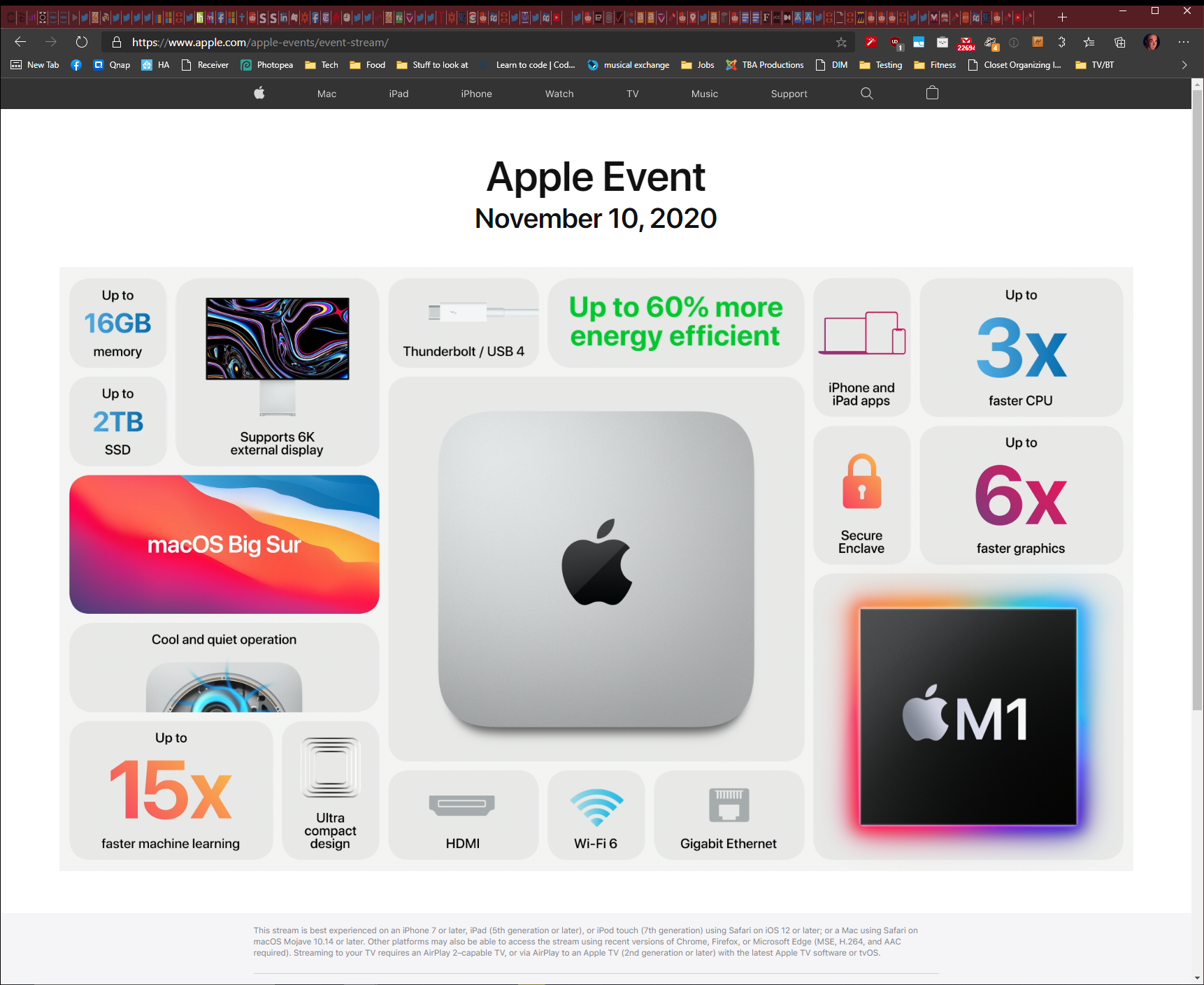
The Mac Mini lives! Second verse, same as the first, though you can buy an older, 2018-era Mac Mini running an Intel chip right now if you love being wrong. Otherwise, the Mac Mini M1 packs in all the features you’ll see above. Let’s go over a few highlights:
Interestingly, if you’re an absolute memory hog, you can only max out your Mac Mini with 64GB of RAM on an Intel-based design. Apple’s M1-based Mac Mini tops out at 16GB. Since nobody has played with one yet, I have no opinion on how that might affect people looking to do some heavy creative work on their tiny desktops. I suspect the overall performance benefits you’ll get from an M1 will greatly outweigh the RAM you won’t be able to have, but that’s just speculation.
Otherwise, you get the same storage in Apple’s new Mac Mini as the old Mac Mini: 256GB, 512GB, 1TB, or 2TB. While you can run up to three 4K displays at once on the Intel Mac Mini, or one 5K display and one 4K display, the new Mac Mini only supports one 6K display and one 4K display. First world problems, I know.
You’ll get the same HDMI 2.0, Gigabit Ethernet, and USB-A ports as before, but you’ll now only get two ThunderBolt 3/USB 4 ports instead of four Thunderbolt 3/USB 3.1 Gen 2 ports. Welcome to dongle land.
Another conspicuous thing about the M1 Mac announcement, the ports were called “Thunderbolt / USB 4”, not “Thunderbolt 3 / USB 4” or “Thunderbolt 4 / USB 4” (there is a separate TB4 spec!). I strongly suspect that a ton of our flaky TB3 products aren’t going to work on these Macs
— Justin Searls (@searls) November 10, 2020
As mentioned earlier, you save $US100 ($138) by ordering the M1 Mac Mini over its previous generation, and preorders for the two versions of the Mac Mini (that you can customise with more memory and storage) start today. They’ll start shipping next week.
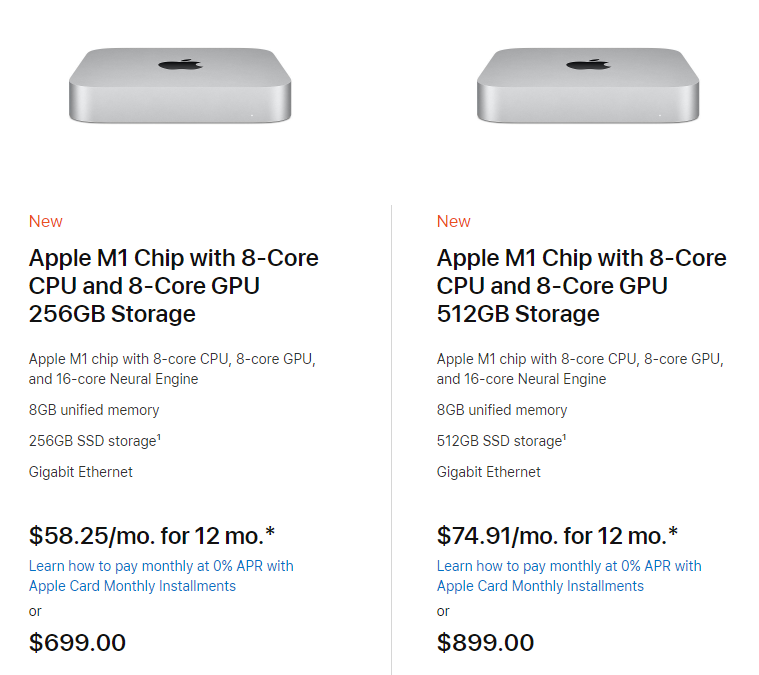
MacBook Pro with M1
What’s different besides M1:
- Wifi 6
- Two Thunderbolt/USB ports; can’t upgrade to four
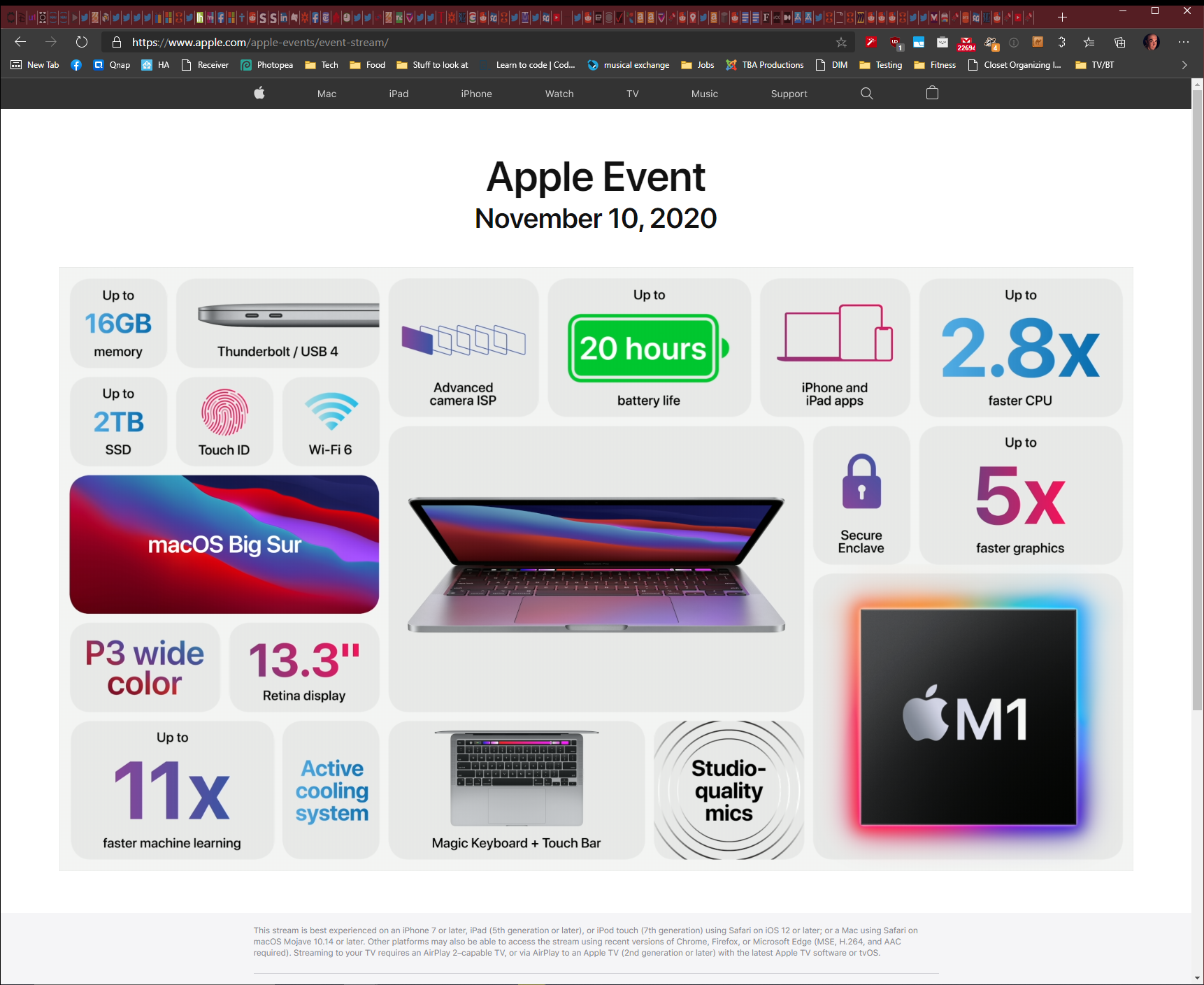
Here we go again. The M1 MacBook Pro differences should sound pretty familiar by now: more cores, faster performance, and better efficiency compared to the previous-generation Intel MacBook Pros. Otherwise, you can trick out your MacBook Pro with the same memory (up to 16GB) and storage (256GB, 512GB, 1TB, or 2TB). Your MacBook Pro’s display is exactly the same as before, as is its form factor and weight (basically). The 720p webcam will still be meh unless Apple can work some software magic. Same speaker setup, and same keyboard — which is hopefully better than its previous “butterfly” designs.
You get a slight boost to Wifi 6 in the M1-based MacBook Pro, and you get the same number of Thunderbolt/USB 4 ports as before — no boost there, save for the ever-confusing nomenclature for Thunderbolt and USB that Apple uses. You don’t get an option to pay more for an M1-based MacBook Pro that comes with more connections, unlike its last-gen Intel-based MacBook Pros.
As before, the MacBook Pro comes in two “versions,” even though you can customise their storage and memory however you want. Preorders start today and start shipping next week.
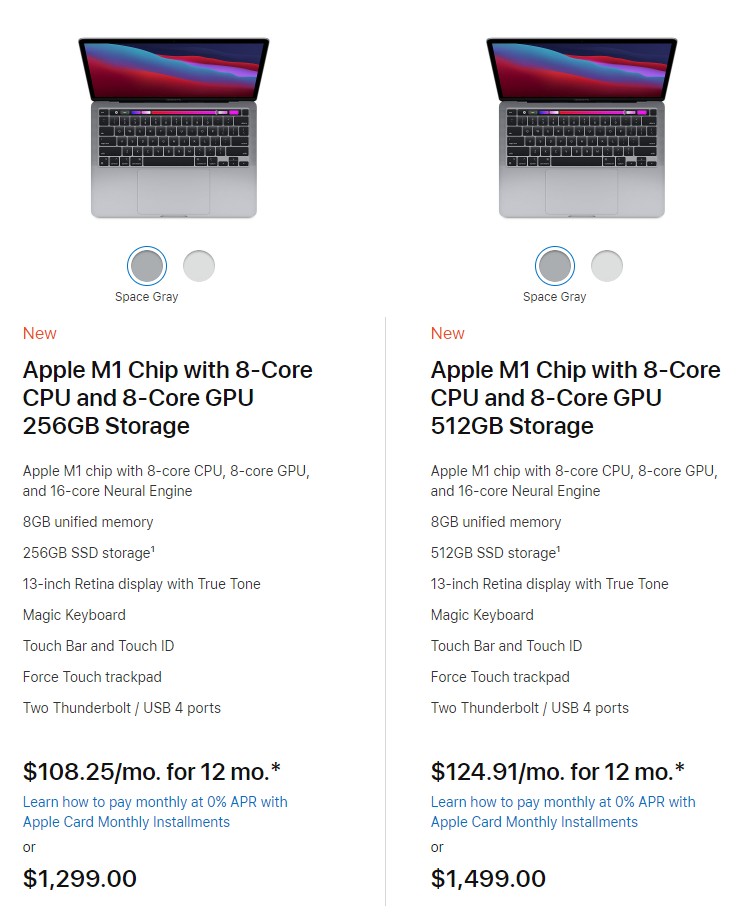

Leave a Reply
You must be logged in to post a comment.